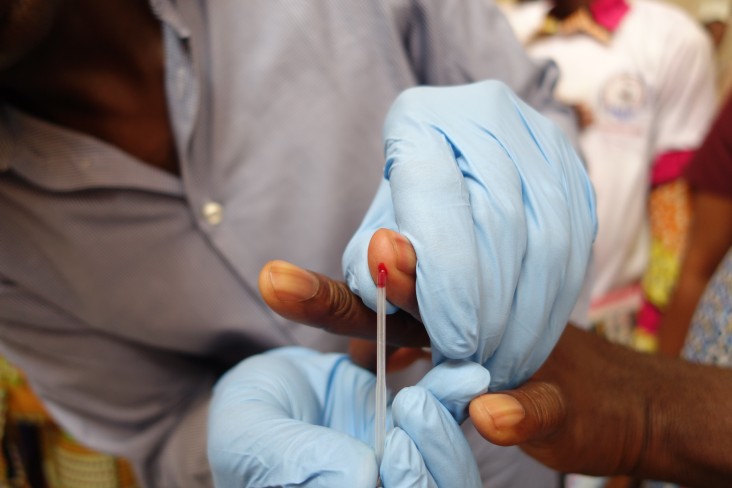Speeches Shim

Segala health center is located 60km from the town of Kayes in Western Mali, with an estimated 4,781 children between the ages of three months and five years. As the rest of the country, this health area zone has a high incidence of severe malaria in children during the raining season,
To reduce the number of children with malaria, the USAID-funded Service de Santé à Grand Impact (SSGI) project provided technical and financial support to Kayes district to implement the seasonal malaria chemoprevention (SMC) campaign. During four consecutive months coinciding with the rainy season and peak malaria transmission period, 28 community health workers and two supervisors from the Segala community health center distributed prophylactic medication to prevent malaria in children under age five, and reached 100% in July, 105% in August, 96% in September and 115% children in October of 2018.
Dr. Issa Keita, the Technical Director of Segala community health center expressed his satisfaction with the SMC campaign as he has seen a reduction in severe malaria cases among children under five.
“In my opinion, this malaria prevention campaign is an excellent intervention and should be extended to older children from 5 to 14 years to reduce the burden of malaria on the community.’’ - Dr. Issa Keita
“Before the SMC strategy, there was a death due to malaria nearly every day in the month of October. When I arrived, I was afraid during the month of October. The introduction of the SMC campaign with the technical and financial support of the SSGI project enabled us to overcome this challenge,” he explains.
“During the first three weeks of October 2018, we recorded no cases of severe malaria in children 3 to 59 months,” added Dr. Keita. “However, the health center received 61 cases of severe malaria among the age group of 5-14 years. The SMC campaign has significantly reduced our workload during the period of high transmission of malaria. In my opinion, the SMC is an excellent intervention and should be extended to children from 5 to 14 years to reduce the burden of malaria on the community.”
Mamadou Diombera, a father from the village of Kalao, which is part of the Segala health catchment area, feels the same way. “I have two children under five years old. Before SMC, I brought my children to the health center at least three times during the rainy seasons for malaria treatments,” he said. “But now, each month I give them the correct malaria medicine and they sleep under mosquito nets nightly. I thank God that none of my children have fallen ill with malaria this year. SMC brings such a big relief to parents. I have encouraged other parents to accept SMC and they have expressed their satisfaction too.”
The World Health Organization recommends SMC as an effective intervention to reduce early childhood malaria infection. This year, the SSGI project supports the National Malaria Control Program to implement SMC campaigns for children aged 3-59 months in 12 districts of Mali. In addition, SSGI is piloting the SMC among children 5-10 years in the Kita area. In total, an estimated 641,010 children (539,918 for 3-59 months and 103,092 for 5-10 years) will receive preventative malaria medication from these campaigns.

Comment
Make a general inquiry or suggest an improvement.